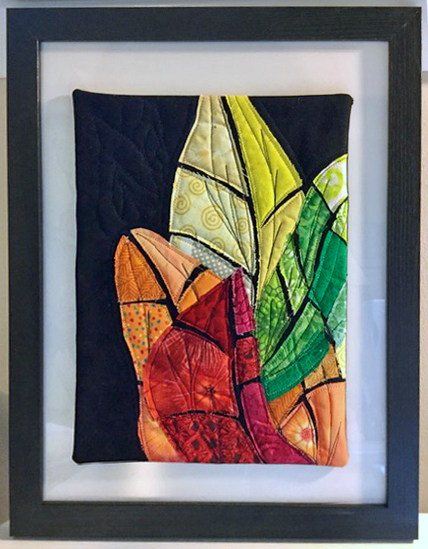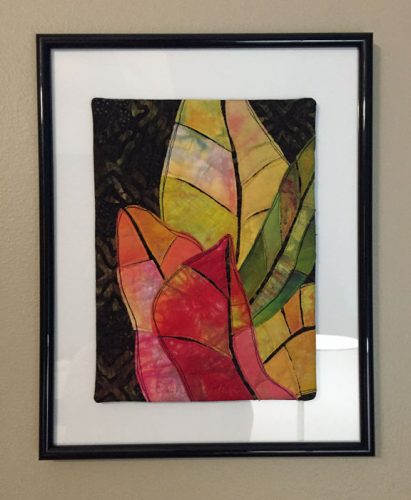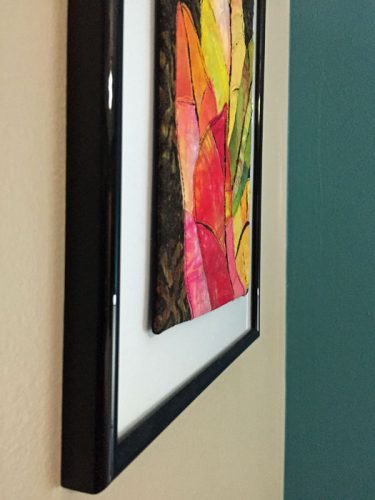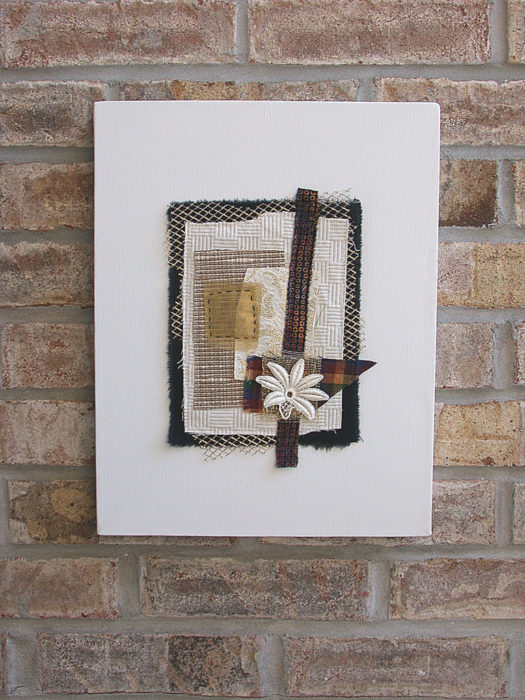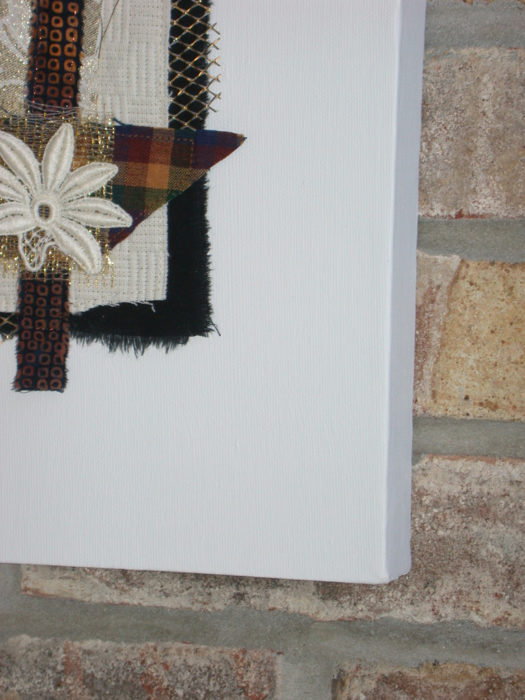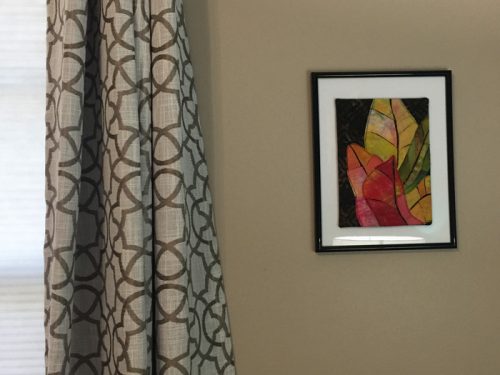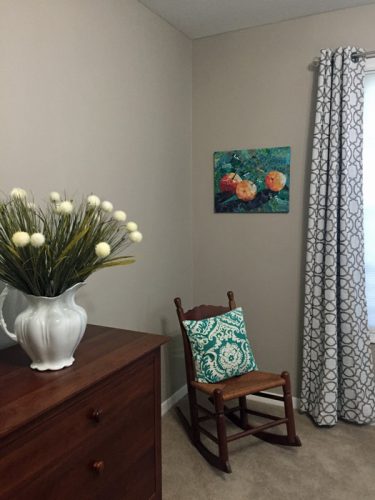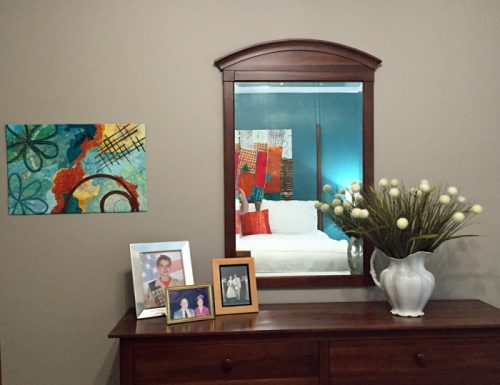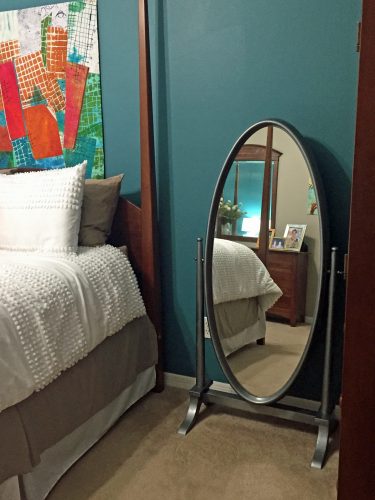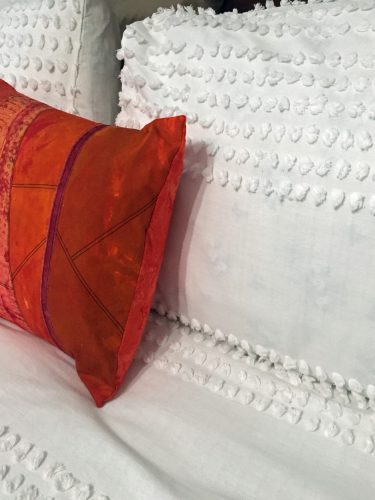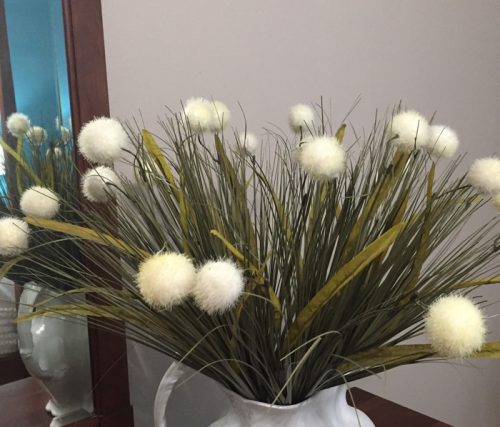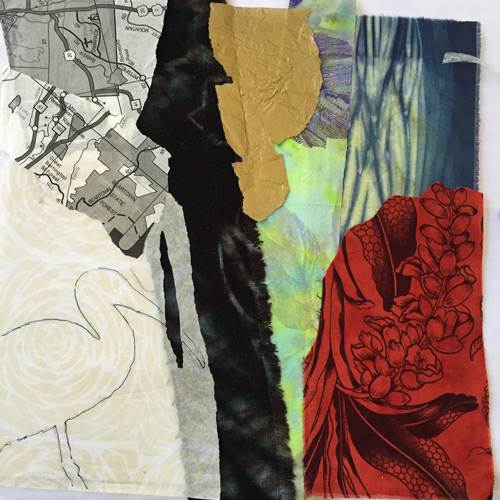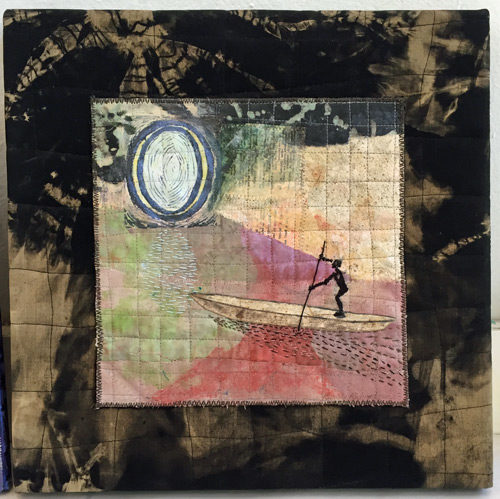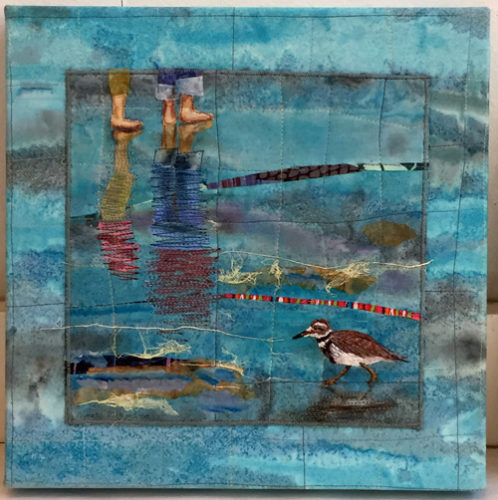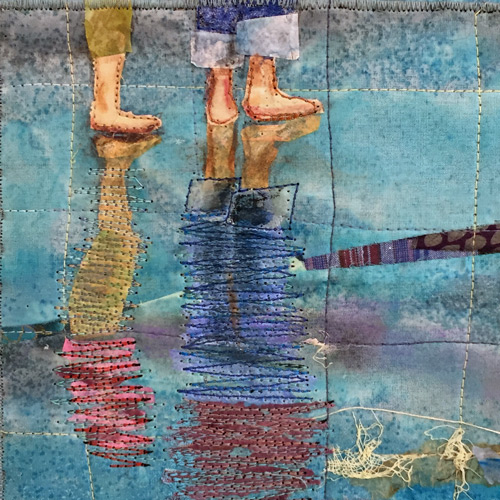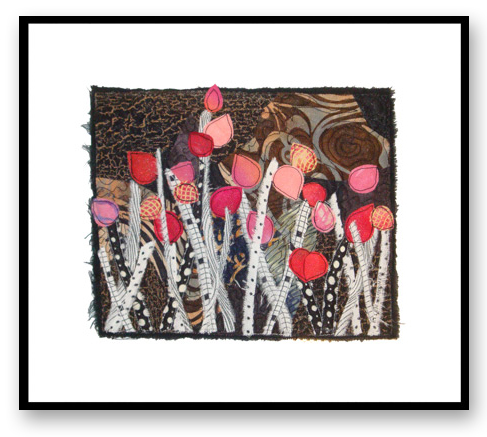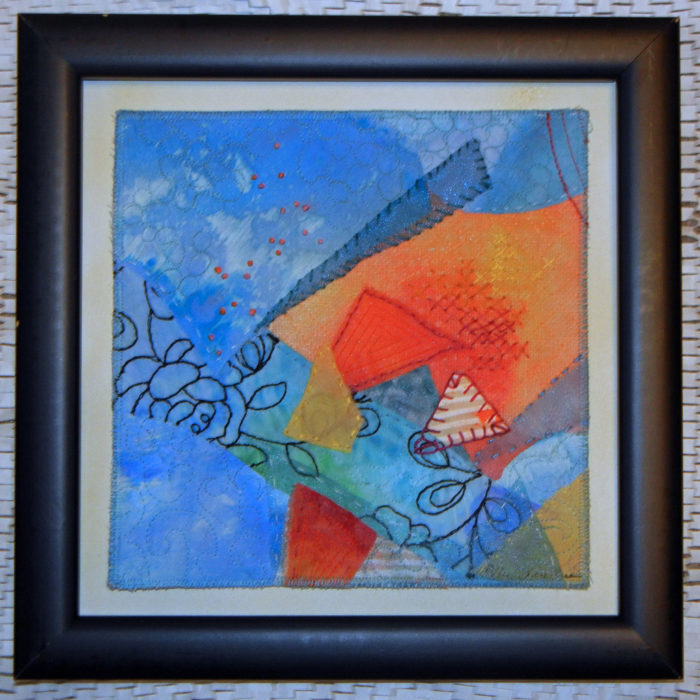I’ve been entering my textile pieces in more mixed media shows lately. I love that fiber arts are now often included in the category of fine art!
The hanging mechanism is a little tricky, though. My pieces have wide hanging sleeves on the back, to accommodate the requirements of traditional quilt shows. However, these mixed media venues are used to hanging pieces on a single nail or some other hanging apparatus. To deal with this, I’ve been inserting the hanging slat into the sleeve and stapling a hanging wire across the back of the sleeve/slat. This worked pretty well, but the quilts never seemed to hang quite flat.
Like this. The slat tilts in the roomy sleeve. As a result, the lower part of the slat rests on the wall, but the top portion protrudes forward.
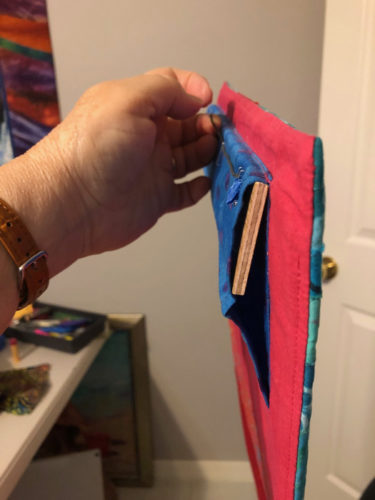
Thankfully, a friend’s engineer husband noticed the issue and came up with a solution. He realized that a sleeve that fit the slat snugly, got rid of the problem. See the difference, below?
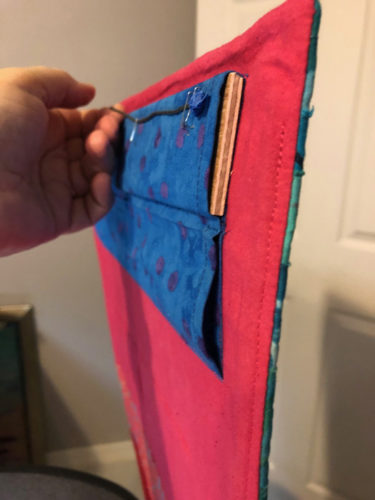
Of course, the issue is that I still want a wide sleeve for traditional shows. So, I decided to hand sew a temporary bottom for the sleeve, sizing it to fit the slat. I stitched through the backing and batting, but not into the front. This worked beautifully and when I need the full sleeve width, I can easily remove those stitches.
Ellen Lindner
P.S. I need this trick because I have quilts heading to several gallery/museum shows coming up. Yippee!



